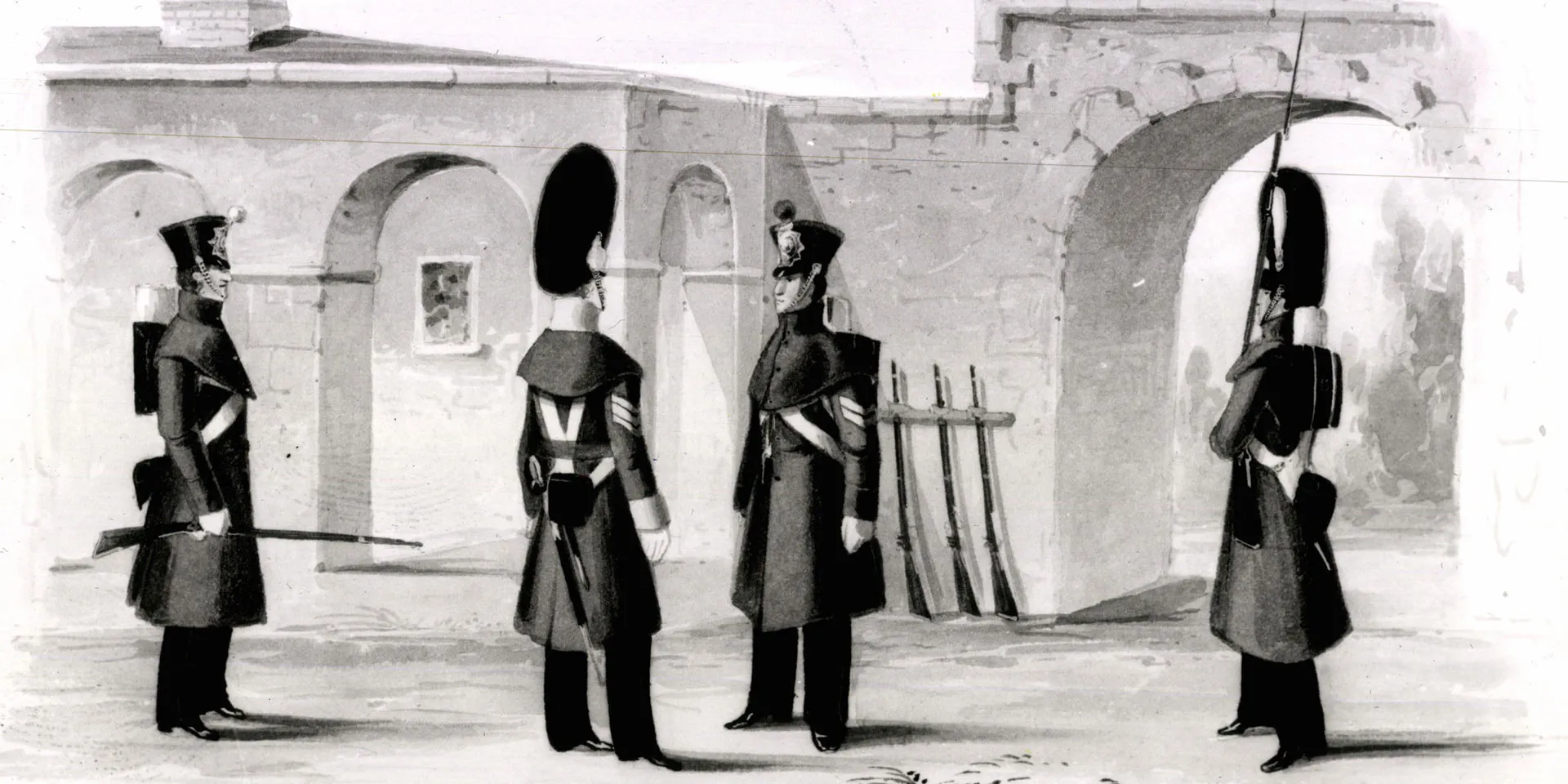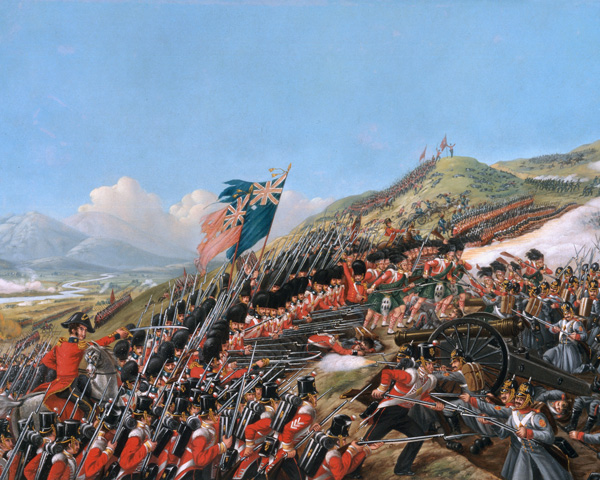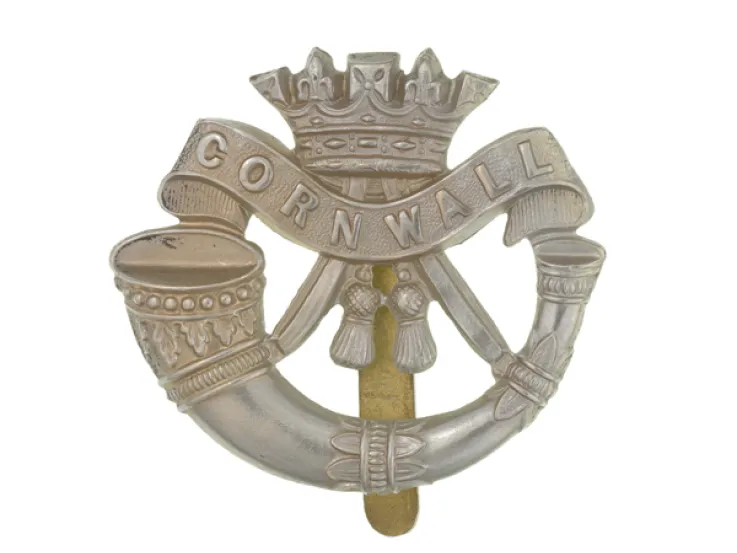
Grenadiers and light infantrymen of the 46th (South Devonshire) Regiment, 1837
Origins
In 1741, a regiment was raised in Newcastle by Colonel John Price, an officer of the 1st Foot Guards. His unit was posted to Scotland the following year, seeing its first action at the defeat at Prestonpans in 1745 during the Second Jacobite Rebellion (1745-46).
It returned to England in 1746, a year which also saw it ranked as 57 in the infantry order of precedence. This rose to 46 in 1751. The regiment's next posting was to Jersey in 1747, followed by Ireland two years later.
North America
The 46th was sent to Nova Scotia in 1757, before fighting at Ticonderoga (1758), Niagara (1759) and Montreal (1760) during the Seven Years War (1756-63). In 1761, the regiment was deployed to the West Indies for two years, taking part in the capture of Martinique and Havana in 1762, before returning to Canada and then Ireland for garrison duties.
In 1776, it returned to North America to fight in the American War of Independence (1775-83). It took part in the battles of Long Island (1776), Fort Washington (1776), Brandywine Creek (1777), Philadelphia (1777), Germantown (1777), Monmouth (1778) and Martha’s Vineyard (1778). From 1778 to 1783, the regiment served in the West Indies, during which it was granted its link to South Devonshire.
Quiz
Which of the following was a nickname of the 46th Regiment?
During the Battle of Paoli in 1777, the regiment's light company wiped out a rebel American force without taking prisoners. When the Americans vowed vengeance, the 46th started wearing distinctive red feathers in their headdress to make sure no other units were mistaken for them and suffered on their behalf. It was also a way of displaying their indifference to American threats.
Revolutionary and Napoleonic wars
Following postings to Ireland and Gibraltar, the 46th returned to the West Indies in 1794 during the French Revolutionary War (1793-1802), fighting on St Vincent in 1795-97. Home service in England and Ireland followed.
In 1804, it returned to the Caribbean, this time to Dominica, where it fought off a French landing and sent a detachment to help capture a French privateer. The regiment arrived home in 1811.
19th century
When peace came in 1814, the regiment was sent to garrison New South Wales for three years and escort convicts. It moved to India for the first time in 1817, staying for 16 years. Further postings to Ireland, Gibraltar, the West Indies and Canada then followed.
In 1854, it was sent to the Crimean War (1854-56), serving at the Alma (1854), Balaklava (1854), Inkerman (1854) and Sevastopol (1854-55), before moving on to Corfu (1856). It spent a further eleven years in India from 1858, followed by garrison duties in England, Ireland, Bermuda and Gibraltar.
Legacy
During the 1881 Army reforms, the 46th was merged with the 32nd (Cornwall Light Infantry) Regiment to form The Duke of Cornwall’s Light Infantry.
Regimental museums
The National Army Museum works with a network of Regimental and Corps Museums across the UK to help preserve and share the history and traditions of the Army and its soldiers.
Discover more about the 46th (South Devonshire) Regiment of Foot by visiting Bodmin Keep.












